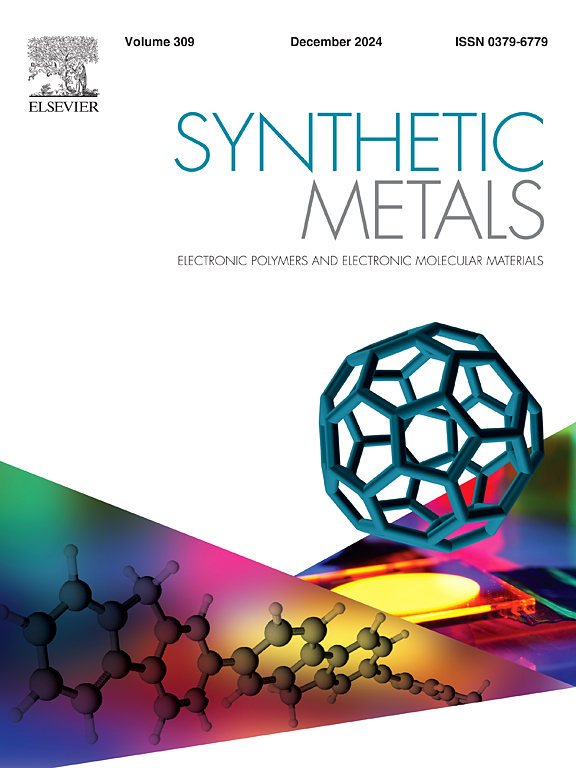Green TADF emitters based on adamantane-substituted acridine donor/diphenyl ketone acceptor in D-A and D-A-D systems
IF 4
3区 材料科学
Q2 MATERIALS SCIENCE, MULTIDISCIPLINARY
引用次数: 0
Abstract
The strategic change in the basic skeleton from donor-acceptor (D-A) to donor-acceptor-donor (D-A-D) to achieve an efficient external quantum efficiency (EQE) as well as high thermal stability is an invitation to develop new materials for organic light emitting diodes (OLED). In this way, adamantane-substituted acridine donor-based emitters, AA-DPK and AA-DPK-AA were developed for green thermally activated delayed fluorescence (TADF) emission. Moreover, the diphenylketone unit was used as an acceptor. The photophysical properties were explored and exhibited the dual emission characters, involving one emission from local or weak and other from strong intramolecular charge transfer (ICT) mechanism. Besides, the PL results exhibited the exact emission peaks not only in solution but also in OLED devices for AA-DPK and AA-DPK-AA molecules with dual fluorescence emission (DFE) nature in solution, which could be ascribed to quasi axial conformation (QAC) and quasi equatorial conformation (QEC). OLED devices using AA-DPK and AA-DPK-AA molecules as emitters with a widely used host material, 1,3-Bis(N-carbazolyl)benzene (mCP) exhibited green electroluminescence with higher EQEs of 8.5 % and 17 %, respectively. The AA-DPK-AA molecule demonstrated a two-fold improvement not only in EQEs and other parameters but also in thermal stability and photoluminescence quantum yield (PLQY). These enhancements contribute to the molecule's stability in OLEDs, resulting in low efficiency roll-off and high overall efficiency.
求助全文
约1分钟内获得全文
求助全文
来源期刊

Synthetic Metals
工程技术-材料科学:综合
CiteScore
8.30
自引率
4.50%
发文量
189
审稿时长
33 days
期刊介绍:
This journal is an international medium for the rapid publication of original research papers, short communications and subject reviews dealing with research on and applications of electronic polymers and electronic molecular materials including novel carbon architectures. These functional materials have the properties of metals, semiconductors or magnets and are distinguishable from elemental and alloy/binary metals, semiconductors and magnets.
 求助内容:
求助内容: 应助结果提醒方式:
应助结果提醒方式:


